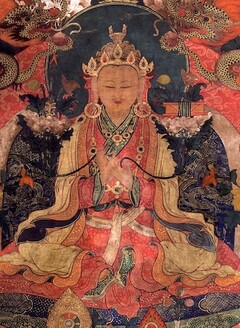Ten Royal Sūtras
English (11) | Deutsch (2) | Español (6) | Français (5) | Italiano (2) | Português (3) | 中文 (1) | བོད་ཡིག (11)
A collection related to the ten royal sūtras or ten sūtras of the king (rgyal po'i mdo bcu), which are said to have been translated upon the advice of Padmasambhava for Emperor Tri Songdetsen's daily recitation:
